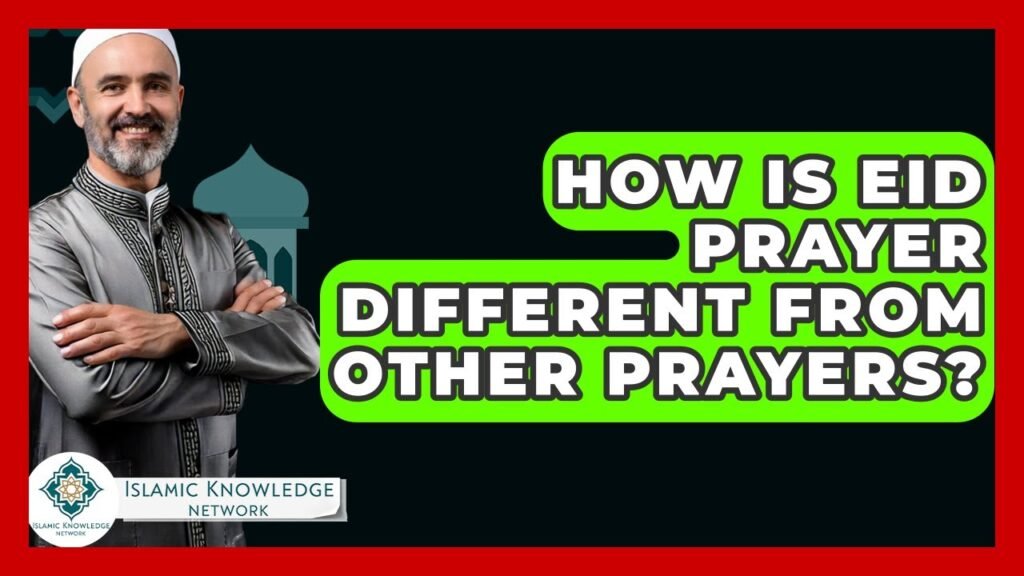You are here to read: How Is Eid Prayer Unique Compared to Other Prayers? – A Thoughtfully Written Guide Offering Spiritual Wisdom and Travel Advice for Every Pilgrim who is going on holy journey of Hajj or Umrah.
Eid prayers hold a special significance in the Islamic faith, distinct from the daily prayers that Muslims observe throughout the year. These congregational prayers, performed on Eid al-Fitr and Eid al-Adha, are marked by their unique features, communal spirit, and specific rituals. Unlike the regular five daily prayers, Eid prayers emphasize a collective worship experience, reflecting the unity and brotherhood of the Muslim community. The structure and manner of these prayers offer insight into their special place in Islamic tradition.
At Airlink Hajj and Umrah, we understand the importance of these rituals and strive to provide comprehensive information to enhance your understanding and experience of Islamic practices. Our platform is dedicated to ensuring that you stay updated with the latest developments related to Hajj and Umrah, including the significance of special prayers like those of Eid. By exploring the distinctions between Eid prayers and regular prayers, we hope to deepen your appreciation of these sacred moments and help you prepare for your spiritual journey. Join us as we delve into the unique aspects of Eid prayer and how they enrich the Islamic faith.
How Is Eid Prayer Unique Compared to Other Prayers?
Eid prayer, held on the two major Islamic holidays, Eid al-Fitr and Eid al-Adha, is unique in several significant ways compared to the five daily prayers (Salah). One of the most notable differences is the distinct format: the Eid prayer consists of two units (Rak’ahs), with an additional six Takbirs — three before the bowing in the first Rak’ah and three after rising from the bowing in the second. This special emphasis on additional Takbirs not only adds to the spiritual experience but also signifies the joyous spirit of the occasion.
Moreover, Eid prayers are performed in congregation, often in large open spaces or mosques, encouraging community participation. Unlike regular prayers, which have prescribed timings, Eid prayers can be performed during a specific timeframe on the morning after Eid. If you’re looking for insights on Eid and other significant Islamic practices, make sure to check out our blog for the latest updates on Hajj and Umrah, keeping you informed throughout your spiritual journey.
-
What distinguishes the Eid prayer from regular daily prayers?
The Eid prayer is conducted in large congregations, features two units (rakats) instead of the usual four or three, and includes specific additional takbirs (praises of God) during the prayer. -
Are there any special conditions for performing the Eid prayer?
Yes, the Eid prayer is performed outdoors or in large spaces, encourages communal participation, and is typically held in the morning after sunrise but before noon.You're at the middle of this awesome post at AirlinkHajjandUmrah.com through: How Is Eid Prayer Unique Compared to Other Prayers?. Keep reading, it gets better!
-
Is there a sermon associated with the Eid prayer?
Yes, after the Eid prayer, an imam typically delivers a sermon (khutbah) which is recommended for all attendees to listen to and is considered an essential part of the Eid celebration. -
What should attendees do before the Eid prayer?
It is recommended to perform a ritual washing (ablution), wear new or best clothes, use perfume, and give charity (Zakat al-Fitr) in preparation for the prayer.
- How does the Eid prayer vary among different cultures?
While the basic structure remains consistent, local customs, the location of the prayer, and the manner of the sermon may vary greatly from one culture to another, reflecting the diverse practices within the Muslim community.
How Is Eid Prayer Different From Other Prayers? In this informative video, we will explore the unique aspects of Eid prayers, known as Salat al-Eid, which are performed during the significant Islamic holidays of Eid al-Fitr and Eid al-Adha. We will look at the distinctive elements that set these prayers apart from the daily prayers observed by Muslims. Throughout the video, we will discuss the additional takbirs recited during Eid prayers, the importance of the accompanying khutbah or sermon, and the absence of the traditional adhan or call to prayer.
Additionally, we will cover the timing and location of Eid prayers, highlighting their communal nature and the sense of togetherness they promote among worshippers. We will also touch on the varying opinions among Islamic scholars regarding the obligatory nature of attending these prayers.
Join us as we celebrate the richness of Islamic rituals and practices through the lens of Eid prayers. Don’t forget to subscribe to our channel for more engaging discussions on Islamic culture and traditions.
⬇️ Subscribe to our channel for more valuable insights.
🔗Subscribe:
#EidPrayer #SalatAlEid #IslamicCulture #EidAlFitr #EidAlAdha #Khutbah #Takbir #CommunityPrayer #IslamicTraditions #MuslimFaith #PrayerRituals #IslamicHolidays #WorshipTogether #FaithAndCommunity #CulturalCelebrations
About Us: Welcome to the Islamic Knowledge Network, your go-to source for deepening your understanding of Islam. Our channel is dedicated to exploring the rich tapestry of Islamic teachings, history, and culture. Here, you will find engaging discussions on the Quran, Hadith, and the lives of the Prophets, alongside contemporary issues faced by the Muslim community.
That wraps up How Is Eid Prayer Unique Compared to Other Prayers?. Thanks for sticking with us till here! Share this: How Is Eid Prayer Unique Compared to Other Prayers? with your friends.
Check our homepage at Air Link Hajj & Umrah for more awesome updates.
Some interesting posts are: 1: Umrah Mubarak, 2: When is Umrah closed 2026?, 3: When does Umrah start after Hajj 2026?
Mushu, an experienced Saudi Arabia traveler and writer, shares insightful tips and spiritual reflections to enhance Hajj and Umrah journeys for fellow pilgrims. He has been to Makkah and Madina from 2016 to 2023 many times and his posts will reflect this.







